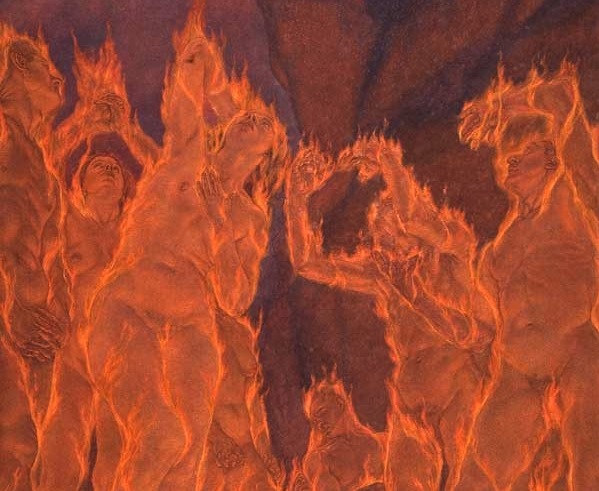Particles blasting from a supermassive black holejet appear to be do television shows on eroticism successtraveling at nearly the speed of light — much faster than scientists had previously clocked them, according to new research.
While most observations of black holes in spaceare with radio telescopes, a research team used NASA's Chandra X-ray Observatory to study their jets in a new light — literally. What they found with the X-ray telescope was surprising.
"We've shown a new approach to studying jets, and I think there's a lot of interesting work to be done," said David Bogensberger, lead author of the study, in a statement.
 In a composite image of the supermassive black hole at the center of the Centaurus A galaxy, jets are seen blasting from the accretion disk in opposite directions. Credit: ESO / WFI / MPIfR / ESO / APEX / A.Weiss et al. / NASA / CXC / CfA /R.Kraft et al.
In a composite image of the supermassive black hole at the center of the Centaurus A galaxy, jets are seen blasting from the accretion disk in opposite directions. Credit: ESO / WFI / MPIfR / ESO / APEX / A.Weiss et al. / NASA / CXC / CfA /R.Kraft et al. Black holes were little more than a theory 50 years ago— a kooky mathematical solution to a physics problem — and even astronomers at the top of their field weren't entirely convinced they existed.
Today, not only are supermassive black holes accepted science, they're getting their pictures takenby a collection of enormous, synced-up radio dishes on Earth. Supermassive black holes, millions to billions of times more massive than the sun, are thought to lurk at the center of virtually all large galaxies.
What we know is this: Falling into a black hole is an automatic death sentence. Any cosmic stuff that wanders too close reaches a point of no return. But scientists have observed something weird at the edge of black holes' accretion disks, the ring of rapidly spinning material around the hole, like the swirl of water around a bathtub drain: A tiny amount of that stuff can suddenly get rerouted.
When that happens, high-energy particles can get flung outward as a pair of jets, blasting in opposite directions, though astronomers haven't figured out exactly how they work. Jets give out prominent radio emissions, but have also been observed to be surprisingly bright in X-rays, too.
 NASA's Chandra X-ray Observatory spacecraft launched in 1999. Credit: NASA's Marshall Space Flight Center illustration
NASA's Chandra X-ray Observatory spacecraft launched in 1999. Credit: NASA's Marshall Space Flight Center illustration So Bogensberger, a postdoctoral fellow at the University of Michigan, decided to look at the black hole at the center of Centaurus A, one of the brightest galaxies in the sky, about 12 million light-years from Earth, in X-rays. For reference, one light-year is nearly 6 trillion miles.
Using data already captured by the space observatory between 2000 and 2022, Bogensberger developed a computer algorithm to track bright lumps within the jets that astronomers call knots. Following knots during a set timeframe is a way to measure the speed.
After tracking one knot in particular, the team found it traveling at least 94 percent the speed of light. That was significantly faster than what scientists had seen in radio waves, with a knot from the same black hole jet, moving at 80 percent the speed of light. The paperhas been published in The Astrophysical Journal.
Not only did the team discover faster clumps in the X-ray band, but the data also showed that the fastest knots weren't the ones closest to the black hole, as was seen in radio waves. Instead, the fastest knots were those around the mid-region of the jets.
What does all of that mean? The answer is a big shrug emoji right now, but Bogensberger intends to use his method to collect more data observing the jets of other supermassive black holes.
"A key to understanding what’s going on in the jet could be understanding how different wavelength bands trace different parts of the environment," he said. "Now we have that possibility."
Topics NASA
 Best monitor deal: Get $350 off the Samsung Odyssey OLED G6 gaming monitor at B&H Photo
Best monitor deal: Get $350 off the Samsung Odyssey OLED G6 gaming monitor at B&H Photo
 The Dark Galleries
The Dark Galleries
 What We‘re Loving: Good Friday Riffs, Your New White Hair
What We‘re Loving: Good Friday Riffs, Your New White Hair
 Tinder launches profile videos, Hot Takes, and an Explore page
Tinder launches profile videos, Hot Takes, and an Explore page
 Best iPad deal: Save $132 on Apple iPad (10th Gen)
Best iPad deal: Save $132 on Apple iPad (10th Gen)
 Tinder launches profile videos, Hot Takes, and an Explore page
Tinder launches profile videos, Hot Takes, and an Explore page
 How to make a Facebook post shareable
How to make a Facebook post shareable
 The Most Expensive Word in History
The Most Expensive Word in History
 Tonight’s Sleep Aid: Medical Expert Evidence
Tonight’s Sleep Aid: Medical Expert Evidence
 Fyre Festival and Trump’s Language
Fyre Festival and Trump’s Language
 Recapping Dante: Canto 27 or Let’s Make a Deal with the Pope
Recapping Dante: Canto 27 or Let’s Make a Deal with the Pope
 The Morning News Roundup for May 1, 2014
The Morning News Roundup for May 1, 2014
 Apple once considered launching its own health clinics, report claims
Apple once considered launching its own health clinics, report claims
 How to use a VPN to book a flight, hotel, and more — plus the best VPN deals
How to use a VPN to book a flight, hotel, and more — plus the best VPN deals
 X is auctioning off memorabilia from the Twitter offices. Here's what's up for grabs.
X is auctioning off memorabilia from the Twitter offices. Here's what's up for grabs.
 The Oral Biography of Gabriel García Márquez
The Oral Biography of Gabriel García Márquez
 Best JBL deal: Save $80 on JBL Xtreme 4 portable speaker
Best JBL deal: Save $80 on JBL Xtreme 4 portable speaker
 An Oral Biography of García Márquez, Part Two
An Oral Biography of García Márquez, Part Two
Senator's confused 'finsta' rant is a gift to Facebook executivesFedEx won't end partnership with NRA because 'discrimination'What we bought in September 2021: Cat backpacks, dog tents, and moreThe UK zine tackling sex and relationship issues for people of colourTrump finally tells the truth: Darrell Hammond does do a better impression of him than Alec BaldwinAmericans Googled 'gun control' more than 'gun shop' in the past weekSpacecraft swoops close to Mercury and snaps images of its wild surfaceHow to revive student activism after a year of loss and traumaRussian film crew launches into space to shoot movie on International Space StationApple launching AC Wellness, healthcare company to take on AmazonHow to create a custom emoji in SlackHow to hide notifications on your iPhone lock screenHow to get HBO Max on Roku, Fire Stick, Apple TV, and other devicesHonestly, I don't love this new iMessage feature in iOS 15'Only Murders in the Building' made its best episode with no verbal dialogueBritney Spears' father can no longer control herHow to revive student activism after a year of loss and traumaFacebook's defense during whistleblower hearing falls apart in real timeTake a walk through mesmerizing photos of Hong Kong's NFT art fairUber driver has a Spotify playlist for every kind of passenger he picks up Not a Revolution Republican Apostate Who’s Afraid of the “Petextrian”? Cops on Campus Friends in Stupid Places In the House of a Thousand Likes Sophia, with Love and Hate Transfer Steam Games to a New Drive Without Redownloading So Much Winning Paradise Tossed It’s a THAAD, THAAD, THAAD World No Re-Turning Point, U.S.A. The Professional Friends of YouTube Pulling Left Joe Ricketts, Media Destroyer The Never-ending Story GeForce RTX 2080 Ti & 2080 Mega Benchmark Show Workers the Money! Faster, Higher, Stronger, More Harmonious Nvidia GeForce RTX 2080 and RTX 2080 Ti Overclocking Guide
1.6872s , 10194.734375 kb
Copyright © 2025 Powered by 【do television shows on eroticism success】,Wisdom Convergence Information Network